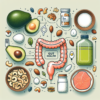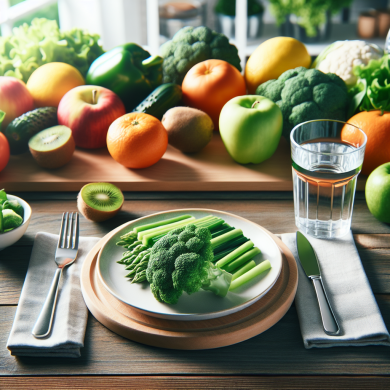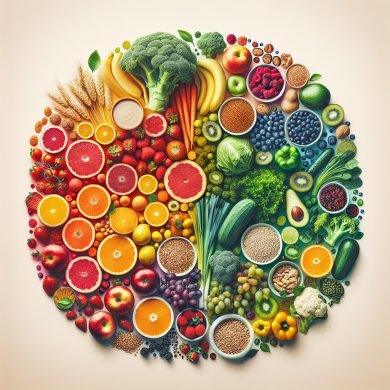Budget-Friendly Clean Eating Tips for Everyone
Introduction to Clean Eating on a Budget
Clean eating is more than just a diet; it’s a lifestyle choice that emphasizes consuming whole, natural foods while minimizing processed items. Adopting a clean eating lifestyle can improve overall health, boost energy levels, and even aid in weight management. However, many people perceive clean eating as an expensive endeavor. This article aims to debunk that myth by providing budget-friendly tips for clean eating that are accessible to everyone.
Understanding Clean Eating
Before diving into tips, it’s essential to understand what clean eating entails. Clean eating focuses on whole foods, which are minimally processed and as close to their natural state as possible. This includes fruits, vegetables, lean proteins, whole grains, and healthy fats. The goal is to nourish the body with nutrient-dense foods while avoiding additives, preservatives, and artificial ingredients.
The Benefits of Clean Eating
Clean eating offers numerous health benefits, including improved digestion, increased energy levels, better mental clarity, and a stronger immune system. Additionally, it can contribute to weight management and reduce the risk of chronic diseases such as heart disease and diabetes.
Budget-Friendly Shopping Tips
One of the biggest misconceptions about clean eating is that it’s costly. However, with strategic planning and smart shopping, you can maintain a clean eating lifestyle without straining your finances.
1. Plan Your Meals
Meal planning is a cornerstone of budget-friendly clean eating. Start by creating a weekly meal plan that incorporates breakfast, lunch, dinner, and snacks. Planning meals ahead of time helps you avoid impulsive purchases and reduces food waste. Choose recipes that utilize similar ingredients to save money and time.
2. Make a Shopping List
Once your meal plan is in place, create a shopping list. Stick to this list while at the grocery store to avoid buying unnecessary items. A list helps you stay focused and prevents impulse purchases that can inflate your grocery bill.
3. Buy in Bulk
Purchasing items in bulk can lead to significant savings. Staples like grains, beans, nuts, and seeds are often cheaper when bought in larger quantities. Bulk buying also reduces packaging waste, making it an eco-friendly choice.
4. Choose Seasonal and Local Produce
Seasonal and local produce is often fresher, more nutritious, and less expensive than out-of-season or imported items. Farmers’ markets and local co-ops are excellent places to find affordable, high-quality produce.
5. Utilize Sales and Coupons
Keep an eye out for sales and use coupons to maximize savings. Many grocery stores offer loyalty programs and digital coupons that can further reduce your grocery bill. Stock up on non-perishable items when they are on sale.
6. Opt for Store Brands
Store-brand products are usually cheaper than their name-brand counterparts and often just as nutritious. Compare labels to ensure you’re getting a good product for less money.
Smart Cooking and Preparation Techniques
How you prepare and cook your food can also impact your food budget. Here are some tips to help you get the most out of your ingredients.
1. Batch Cooking
Batch cooking involves preparing large quantities of food at once and storing portions for later use. This technique saves time and money and ensures you always have a healthy meal ready to go. Soups, stews, and casseroles are great options for batch cooking.
2. Use Whole Ingredients
Whenever possible, purchase whole ingredients instead of pre-cut or pre-packaged items. Whole vegetables, for example, are often cheaper than their pre-cut counterparts. Additionally, buying whole grains and grinding them at home can be more economical than purchasing pre-ground versions.
3. Embrace Plant-Based Meals
Plant-based meals, which rely on fruits, vegetables, legumes, and grains, are typically less expensive than meat-based dishes. Incorporating more plant-based meals into your diet can help reduce costs while increasing nutrient intake.
4. Preserve Your Food
Learning how to properly store and preserve food can extend its shelf life and prevent waste. Freezing surplus produce, canning, and making homemade jams or sauces are excellent ways to make the most of your groceries.
Mindful Eating and Portion Control
Mindful eating involves paying attention to what you eat and how it makes you feel, which can lead to better food choices and portion control. Here’s how to practice mindful eating:
1. Listen to Your Body
Eat when you’re hungry and stop when you’re full. This simple practice can prevent overeating and help you better appreciate the flavors and textures of your food.
2. Focus on Portion Sizes
Being mindful of portion sizes can help you make your groceries last longer. Use smaller plates and bowls to naturally reduce portion sizes and prevent overconsumption.
3. Eat Slowly
Take your time to savor each bite. Eating slowly allows your body to register fullness, reducing the likelihood of overeating and helping you enjoy your meals more fully.
Affordable Sources of Clean Proteins
Protein is a crucial component of a balanced diet, but it doesn’t have to be expensive. Here are some budget-friendly protein sources:
1. Eggs
Eggs are an affordable and versatile protein source. They can be prepared in numerous ways and used in a variety of dishes.
2. Legumes
Beans, lentils, and chickpeas are inexpensive protein-packed alternatives to meat. They are also high in fiber and can be used in soups, stews, salads, and more.
3. Canned Fish
Canned fish, such as tuna and salmon, are cost-effective sources of protein and healthy fats. Look for options packed in water to reduce calorie intake.
4. Tofu and Tempeh
Tofu and tempeh are plant-based proteins that are often cheaper than meat. They can be cooked in a variety of ways and absorb flavors well, making them a versatile addition to meals.
Conclusion
Clean eating doesn’t have to break the bank. By incorporating these budget-friendly tips, you can enjoy the benefits of a clean eating lifestyle without overspending. Remember, the key is to plan ahead, shop smart, and make the most of your ingredients. With a little creativity and mindfulness, clean eating can be both affordable and enjoyable for everyone. Embrace this nourishing way of eating and experience the positive impact it can have on your health and well-being.















Add comment